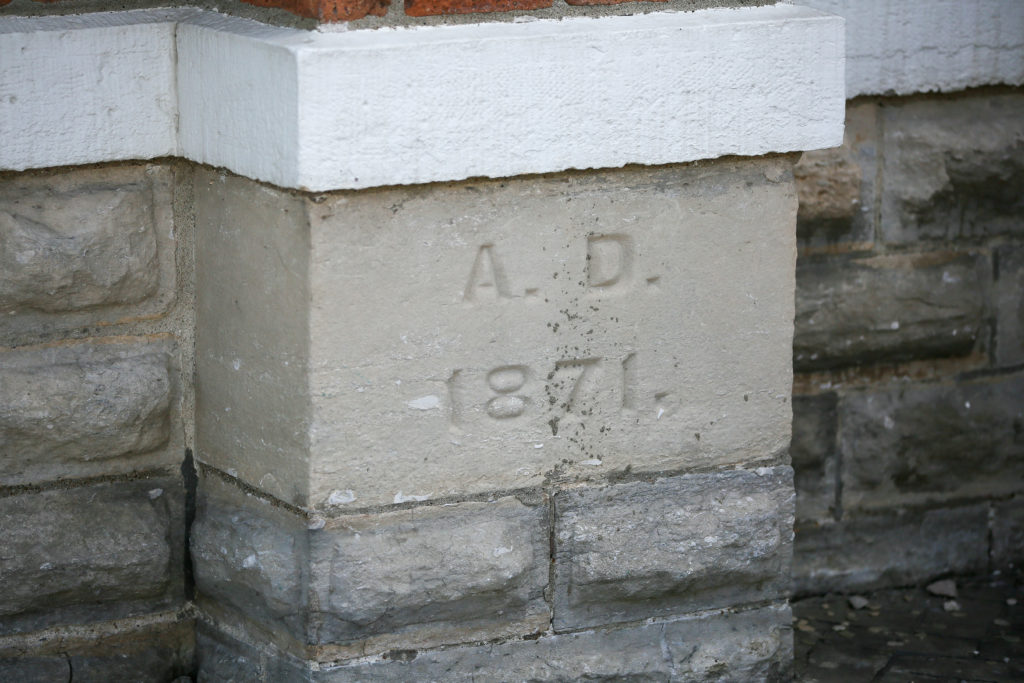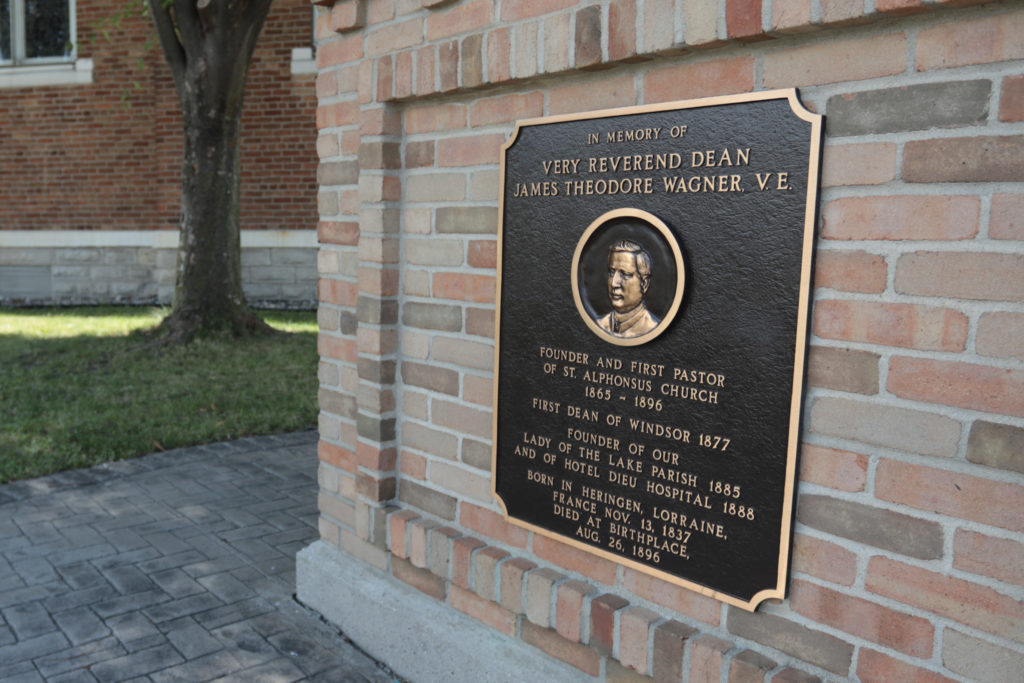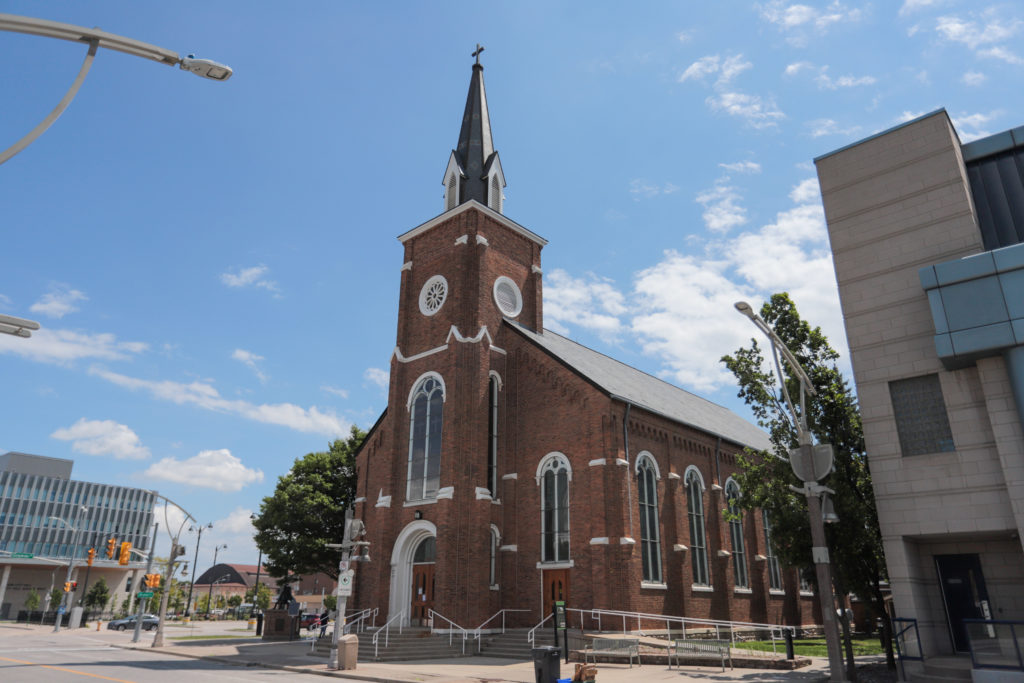By the 1850’s Windsor with 1,000 residents had acquired the status of village. In 1852 while on a visit Rt. Rev. Armandus De Charbounel, Bishop of Toronto (whose diocese embraced all of Ontario west of Kingston) decided a church should be built to meet the needs of the French farmers living along the riverfront from Lake St. Clair to Windsor. The pastor of L’Assumption, Sandwich had arranged hospitality for him at the home of Mr. Vital Ouellette, a prominent farmer living on Sandwich Street.
Mr. Ouellette and his brother-in-law Daniel Goyeau each offered an acre of land from their respective farms lying along what is now Ouellette Avenue and Goyeau Street.
By the time the final choice was made, the Goyeau Street land had changed hands but the new owner Mr. S.S. Macdonell sold the Roman Catholic Episcopal Corporation, for the consideration of $1 the lots on which St. Alphonsus Church, Hall and Presbytery now stand.
On September 18, 1856 the site on Goyeau Street was blessed by the first Bishop of the new See of London, Rt. Rev. Peter Adolphus Pinsonneault and the chapel dedicated in the fall of 1857.
It was a plain frame building, with a small square sanctuary, opening into a smaller sacristy, its rough board pulpit draped with red baize; the melodeon placed within the wooden communion rail.
Later the addition of an organ loft and enlarging the sanctuary gave them additional space.
The first official pastor was Very Rev. James Theodore Wagner, appointed June 1, 1865. He came from Franco-Germain Lorraine and was fluent in both languages but little English when he arrived in the area and taught for a while at Assumption College.
Upon his appointment as pitor Wagner journeyed back and forth from Sandwich or shared the hospitality of the Ouellette family until toward the end of 1865 when he built the first residence south of the Church on Goyeau.
To fulfill a vow to build a house of beauty for the glory of God while a student in Europe, Fr. Wagner returned to the old Catholcicountries of Europe to ask for help. A letter dated Rome, July 6, 1869 gives details of his audience with Pope Pius IX and tells of the presentation of silver and gold ciborium to Fr. Wagner, for his missionary work. The pope had received it on his 50th Anniversary of ordinationton to the priesthood.
He also brought back other works of art for sale including 5 steel plate engravings given by Louis Napoleon, Emperor of France. Raffled with some pictures and along with the proceeds of a number of concerts $6,000 was received for the building fund.

Fr. Wagner returned to Windsor in October 1869 and the Spring of 1871 witnessed the laying of the corner-stone of the new church. Within three years the $30,000 church was completed.
Built in the Norman style, according to the original plan the church is 125′ by 60′, the walls 30′. From floor to ceiling in the center 45′, the inside arched and supported by two rows of columns. The woodwork is black walnut and chestnut. On each side of the altar are 12 paintings representing scenes in the public life of Jesus. The ceiling is wood, consisting of 12 panels each 8 1 by 12′ with 5 medallions down the centre each 8 1 in diameter. The panels are copies of old masters. The two angels over the sanctuary are taken from Raphael’s Sistine Madonna. The walls are ornamented with representations of saints placed between memorial windows.
The stations of the cross are oil on canvas were done around 1892 by an American artist.
The acoustic properties are admirably adapted for preaching and music.
A steeple reaching a height of 204′ was mounted on the tower. It was Fr. Wagner’s wish the cross-surmounted spire should serve as a beacon to the mariner, his last look on sailing away and first on return. Sailors did use it to take a heading.
In 1919 a violent wind storm swept through Ontario from the Great Lakes to Ontario and Essex County suffered heavy damage. Over 50′ of the spire of the church crashed strewing debris over Park and Goyeau The spire was not replaced.
Because of poor health Dean Wagner returned to France in 1896 and died there that year.

The next pastor of note was Rev. Joseph Edmund Meunier (1901). During his administration the Catholic schools of Windsor were placed under control of the Catholic rate-payers,the 1865 rectory was replaced, grounds beautified and repairs to the sacristy, confessionals, organ loft and vestibule took place. For two years he also administered the affairs of the diocese.
Rev. D. J. Downey returned as pastor of St. Alphonsus on September 27, 1914 and guided the parish until his sudden death on April 9, 1926. His pastorate synchronized with the boom days in Windsor. The rapid growth of the auto industry brought extraordinary growth in population. Talking advantage of the good times, Dean Downey built St. Alphonsus Hall at a cost of $57,000 as a centre of parish activity and redecorated the church without incurring a debt.
Spin-off parishes due to Windsor’s growth were Holy Name of Mary in 1917 to the west and in 1924 St. Clare to the south. Previously to the east Our Lady of the Rosary had been built and Irmnaculate Conception Parish to the south east was formed.
In 1952, St. Alphonsus was transferred to the Redemptorists. When the parishioners heard the Redemptorists were taking over, one wag remarked “We’ll get a mission sermon every Sunday.”
Building of new public housing, Sr. Citizen high rise apartments and other apartment building helped the Redemptorists in their revitalization of the parish.
The parish was returned to the diocese in 1984.
The expansion of the Detroit-Windsor Tunnel Plaza in the 1990s brought changes to the church’s facilities, including the demolition of the 80-year-old parish hall. Under the leadership of Father Ulysses Lefaive, a new building housing our parish hall and church offices was constructed. The facade of this building won an award from the Windsor Architectural Conservation Advisory Committee for maintaining the original architectural integrity of the property.
When St. Clare Parish closed, our faith community was enriched by the members who joined us.
In 1999, Father Vince Gleeson launched the restoration project for the church building. The scope of this undertaking was immense and included a new slate roof, rebuilding the bell tower, building a new steeple, installing an electronic carillon, and restoring the stained glass windows.
Restoration work on the church continued in the late 2010’s including the restoration of the stain glass windows, and plaster and paint repairs in the main church.
In 2020, St. Alphonsus Parish became part of the Windsor Heritage Catholic Family of Parishes under the leadership of the Basilian Fathers.

Other History
Hotel Dieu Hospital also played a role in the Parish. In 1886 Dean Wagner became concerned about the education and welfare of a small group of Negroes who had established themselves in Windsor.
Unable to arouse interest locally, he distributed circulars throughout Canada. He received an offer of prayers and monies from the Religious Hospitallers of Hotel Dieu of St. Joseph in Montrea.
Unable to locate teachers, he persisted with the St. Joseph Sisters and in 1888 Mother Paquete with a small group of Sisters was sent to teach Father Wagner’s beloved Negro children and at the same time arrange to build a hospital in Windsor.
The 100 bed structure was blessed and dedicated on October 15, 1889.
To help furnish it Fr. Wagner arranged to sell oil paintings that he had gathered from European art galleries.
The school was opened in building across the street where the Police Station now stands. The school-room was kept filled by the efforts of a saintly old coloured lady “Aunt Christian” who made daily rounds to bring in the stray sheep. The aristocratic blacks did not take kindly to the idea of attending a benevolent school and only the very poorly attended.
The nuns, being cloistered could not devote themselves to the outside charities which seemed the only means of securing and holding the allegiance of the Negro and the school dwindled to died.
